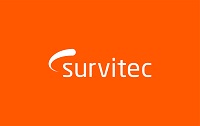MORE SHIPBOARD OXYGEN REQUIRED IN THE EVENT OF EXISTING OR FUTURE RESPIRATORY INFECTIONS
Leading maritime safety specialist Survitec is highlighting the need to ensure there is sufficient medical oxygen onboard vessels in the event of crews and passengers becoming ill with a respiratory infection.
While the IMDG Code and MFAG guidelines require operators to carry 44 litres of medical oxygen at 200 bar as minimum, Survitec recommends increasing current supplies to ensure sufficient availability onboard should crews contract Covid-19 or any other respiratory infection.
“The current minimum may not be enough in the event of a new outbreak,” said Jan-Oskar Lid, Global Technical Sales Manager – Fire, Rescue & Safety, Survitec.
“Most vessels will carry one 40 litre cylinder and two smaller 2 litre cylinders. A 40 litre cylinder operating at 200 bar with a flowrate of max 25 litres per minute will last for about 5.3 hours, but this is unlikely to be enough to treat more than one Covid-19 patient if a medical evacuation is not possible or cylinders cannot be quickly replaced,” he said.
A healthy adult requires about 7 litres of oxygen per minute, but Covid-19 can deplete this to dangerous levels. Depending on the severity of the infection, a single Covid-19 patient would need between 2 and 15 litres of oxygen per minute. In exceptional circumstances, Stage 4 Oxygen Escalation Therapy has required 60 litres per minute.
“Although the number of cylinders stored onboard depends on a range of factors such as number of crew/passengers, type of cargoes carried and sailing/operating area, clearly, the current minimum will not be enough to treat multiple persons infected with the virus. We therefore recommend that ship/offshore installation operators and owners increase the number of cylinders they currently have onboard.”
According to the Maritime Labour Convention 2006 (MLC, 2006), adopted by the International Labour Organization (ILO), a seafarer, while working onboard, has the right to health protection and medical care as comparable as possible to that which is generally available to workers ashore. This includes prompt access to the necessary medicines, medical equipment and facilities for diagnosis and treatment and to medical information and expertise.
“This is why medical oxygen is a registered medicine which is exactly the same as the medical oxygen gas supplied to hospitals and other medical facilities on shore. Medical oxygen is considered to be a prescription drug and is part of the medical outfitting onboard of a vessel,” said Lid.
To support its customers, Survitec has partnered with Netherlands-based Lagaay International to champion its ISO 9809-1:2019 compliant MedOx medical oxygen cylinders.
Joris Alberda, Managing Director, Lagaay International, said: “Survitec supplies a range of ancillary medical equipment to the global maritime industry, including oxygen delivery systems and resuscitators, all of which are compatible with our MedOx cylinders. We will now work with Survitec to ensure maritime industry demand for medical oxygen can be met.”
Lid added: “MedOx cylinders supplied by Lagaay are filled to 200 bar, the pressure recommended by IMO. Other regions around the world have different maximum filling pressure. In the USA it is 150 bar and some Asian countries it is 128 bar.”
Survitec has three MedOx delivery systems available to meet the IMDG/FMAG rules designated “Bedside”, “Outside” and “Norwegian”. Most flag states approve the “Bedside” solution, the most common method.
This requires the entire unit to be installed in the vessel’s hospital with the oxygen cylinder placed between two beds, mounted against the bulkhead. A fixed pressure regulator is placed directly on the cylinder. The oxygen flow is adjusted via the flow meter on the bulkhead.
If the vessel has a Norwegian or Isle of Man flag, the “Norwegian” method is required. This is similar to the Bedside solution, however, a high pressure hose connects the cylinder to the regulator on the bulkhead. The regulator is equipped with a safety valve, so if there is a leak inside the regulator, the oxygen will be vented out to open air.
The “Outside” solution is for all vessel’s operating under the Dutch flag or for those required to locate their medical oxygen cylinders outside of the accommodation. The MedOx is fed into the vessel’s hospital area via piping.
“It is important to remember that different regions have established their own standards,” said Lid.
“There are many different types of valve outlet connections available. However, for medical gases we strongly recommend the use of the Pin Index Safety System valve.
“This is the type used on Lagaay’s MedOx cylinders and is the closest valve to an international standard. It is specifically designed for Medical Oxygen and and ensures the correct gas is filled into the correct cylinder. It also ensures that the cylinder will only connect to the correct medical equipment.
“Valve outlet connections standards should be universal, rather than national, as this will help ensure product safety and integrity.”

